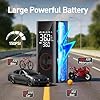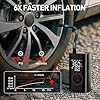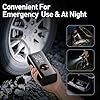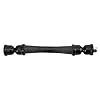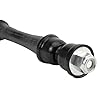Table of Contents
When considering different modes of transportation, many people find themselves wondering: are boats more efficient than cars? This seemingly simple question opens up a complex world of fluid dynamics, energy conversion, and practical physics that reveals why boats and cars operate on fundamentally different efficiency principles. While we typically measure car efficiency in miles per gallon (MPG), boat efficiency involves a completely different set of calculations and considerations that make direct comparisons more challenging than they initially appear. This comprehensive analysis will dive deep into the science behind transportation efficiency, examining everything from basic physics and fuel consumption patterns to real-world performance data across various vessel and vehicle types. By understanding the factors that govern efficiency in these different environments, you’ll gain valuable insights to inform your transportation choices, environmental considerations, and recreational planning.
Understanding the Fundamentals of Efficiency Measurement
Before we can accurately compare boats and cars, we must first establish how efficiency is measured in each domain and why these differences matter.
Defining Efficiency in Transportation Contexts
Efficiency in transportation typically refers to how effectively a vehicle converts energy into movement over distance. For cars, this is most commonly expressed in miles per gallon (MPG), which provides a straightforward measurement of how far a vehicle can travel on a unit of fuel. The EPA provides standardized testing procedures that allow consumers to compare different vehicles under consistent conditions . This measurement has become the gold standard for automotive efficiency because it directly translates to operating costs and environmental impact.
Boats, however, operate in a completely different environment with unique challenges. While some boaters might refer to “nautical miles per gallon,” the marine industry more commonly discusses efficiency in terms of gallons per hour (GPH). This measurement focuses on fuel consumption rate rather than distance coverage, reflecting the reality that water conditions, currents, and hull design dramatically affect speed and therefore distance traveled . This fundamental difference in measurement approach highlights the challenge in making direct boat-to-car efficiency comparisons.
The Physics of Movement Through Different Mediums
The core reason for the efficiency disparity between boats and cars lies in the fundamental physics of moving through different mediums:
- Density and Resistance: Water is approximately 800 times denser than air, creating significantly more resistance for vessels moving through it . This density difference means boats must expend substantially more energy to achieve and maintain movement compared to land vehicles.
- Continuous vs. Intermittent Power Requirements: Car engines often operate at variable loads, with opportunities for coasting and energy recovery during braking. Boat engines, particularly in displacement hulls, typically work at a more constant output level, with fewer opportunities for energy recovery . One contributor to a boating forum noted that “a boat engine ‘works’ about 90% of the time whereas a car engine ‘works’ about 30% of the time (the rest of the time it’s coasting)” .
- Propulsion Efficiency: Modern automotive drivetrains can transmit power to the wheels with 85-90% efficiency. Marine propulsion systems, which must move water rather than push against solid ground, typically achieve lower overall efficiency in converting engine power to forward motion.
Direct Efficiency Comparisons: Boats vs. Cars
When we examine specific fuel consumption data across different types of boats and cars, clear patterns emerge that demonstrate the significant efficiency advantage of land vehicles.
Automotive Fuel Efficiency Standards
Modern passenger vehicles have achieved remarkable efficiency levels through decades of engineering refinement:
- Standard Gasoline Vehicles: Mainstream sedans like the Honda Civic achieve EPA ratings of 32/41/36 mpg (city/highway/combined) . Even compact affordable cars like the Nissan Versa can reach 35 mpg combined .
- Hybrid Vehicles: The Toyota Prius leads this category with an impressive 57 mpg combined rating , while popular family sedans like the Toyota Camry Hybrid achieve 51 mpg combined .
- Luxury Vehicles: Even premium vehicles like the Lexus ES 300h deliver excellent efficiency at 44 mpg combined , demonstrating that efficiency no longer requires sacrificing comfort or features.
These figures establish a baseline for what represents strong fuel efficiency in the automotive world, with most modern cars achieving between 30-57 MPG depending on their powertrain and design.
Marine Fuel Consumption Realities
Boating efficiency presents a dramatically different picture, with consumption patterns that vary enormously based on hull type, speed, and conditions:
- Small Powerboats: A 150-horsepower outboard motor at wide-open throttle consumes approximately 15 gallons per hour . Depending on speed and conditions, this might translate to 2-4 MPG.
- Trawlers and Displacement Hulls: These typically represent the most efficient boat designs. A 40-50 foot full-displacement trawler might achieve approximately 2.5 nautical miles per gallon at 7.5 knots while burning 3 GPH . One boater reported their 30-foot Sundowner Tug consumed about 1.2-1.5 GPH .
- Planing Hulls: These designs become more efficient at higher speeds once they rise onto plane. A planing hull might achieve 2.9 NMPG at 7.5 knots but see this drop to 1.7 NMPG at 9 knots before improving again to 0.9 NMPG at 25 knots .
- Semi-Displacement Hulls: These represent a middle ground, with one example achieving 2.2 NMPG at 8.5 knots but dropping to 0.74 NMPG at 10.5 knots .
Table: Direct Fuel Efficiency Comparison
Factors That Determine Marine Efficiency
Understanding why boats struggle to match automotive efficiency requires examining the unique challenges of marine transportation.
Hull Design and Hydrodynamics
The shape of a boat’s hull represents one of the most significant factors affecting its efficiency:
- Displacement Hulls: These designs move through rather than over the water, creating relatively low wakes but facing significant drag. They become exponentially less efficient as speed increases beyond “hull speed” (approximately 1.34 times the square root of the waterline length) .
- Planing Hulls: These are designed to rise up and ride on top of the water at higher speeds, reducing drag once on plane but requiring substantial power to transition from displacement to planing mode .
- Semi-Displacement Hulls: Offering a compromise, these hulls can operate efficiently at both low and moderate speeds but suffer from significantly reduced efficiency during the transition phase between displacement and planing modes .
The Critical Role of Speed in Marine Efficiency
Unlike cars, which often achieve their best efficiency at moderate cruising speeds (typically 45-55 MPH), boats exhibit dramatically different efficiency characteristics across their speed range:
- Displacement Speed Optimization: Full-displacement vessels achieve peak efficiency at relatively slow speeds. One analysis demonstrated that slowing a trawler from 9 knots to 7.5 knots improved fuel economy by almost 300% .
- Planing Hull Efficiency Curve: Planing hulls show poor efficiency at mid-range speeds but improve once fully on plane. The same analysis showed that increasing speed from 15 to 25 knots in a planing hull only reduced efficiency by 18%, compared to a 41% reduction when increasing from 7.5 to 9 knots in the displacement mode .
- The “Sweet Spot”: Every boat has an optimal speed where it delivers the best efficiency, typically where the hull is either moving cleanly through the water (displacement) or riding efficiently on top (planing), avoiding the high-drag transition zone.
Weight and Drag Considerations
Additional factors that disproportionately affect boats compared to cars include:
- Weight Impact: While weight affects all vehicles, it has a more pronounced effect on boats, particularly planing hulls at higher speeds. A full-displacement trawler can carry significant additional weight with minimal efficiency impact, while a planing hull will see substantial efficiency reductions when heavily loaded .
- Fouling and Marine Growth: Unlike cars that operate on clean paved surfaces, boats accumulate marine growth on their hulls that dramatically increases drag. One analysis suggested that increased drag from fouling could reduce fuel economy by 17% or more .
- Propeller Condition: Minor damage or fouling on a propeller can significantly reduce efficiency, whereas automotive tires maintain more consistent performance throughout their lifespan.
The Efficiency of Different Boat Types
Not all boats are created equal when it comes to fuel efficiency. Understanding how different designs compare can help explain the broad spectrum of marine efficiency.
Displacement Vessels: The Prius of the Water
Full-displacement hulls represent the most efficient design for slow-speed marine travel:
- Trawlers: These vessels typically achieve 2-3 nautical miles per gallon at speeds of 7-8 knots. A 40- to 50-foot trawler might burn 3 GPH at 7.5 knots, resulting in approximately 2.5 NMPG .
- Sailboats Under Power: While designed primarily for wind power, modern auxiliary sailboats with efficient diesel engines can achieve remarkable fuel economy, often matching or exceeding trawler efficiency at similar speeds.
The key advantage of displacement hulls is their ability to move through water with minimal wave-making resistance at their design speed, making them ideal for long-distance passagemaking where speed is secondary to range and economy.
Planing Hulls: The SUVs of the Marine World
Planing hulls sacrifice low-speed efficiency for the ability to travel at higher speeds:
- Sportboats and Runabouts: These typically achieve 1-2 MPG at lower speeds but can approach 1 MPG or better at high planing speeds.
- Performance Cruisers: Larger planing yachts in the 30-50 foot range might achieve 0.5-1.0 NMPG at cruising speeds of 18-25 knots.
The efficiency equation changes for planing hulls—while they consume more fuel per mile, they cover distance much faster, which can be valuable for certain applications where time savings offset fuel costs.
Semi-Displacement Designs: The Compromise Solution
Semi-displacement hulls attempt to bridge the gap between displacement and planing designs:
- Efficient at Multiple Speeds: These vessels can operate economically at displacement speeds while having the ability to achieve moderate planing speeds when needed.
- Versatile Performance: A semi-displacement boat might achieve 2.2 NMPG at 8.5 knots but only 0.74 NMPG at 10.5 knots (during the inefficient transition phase) .
This design philosophy represents a practical compromise for boaters who value flexibility over optimized efficiency at a specific speed.
The Automotive Efficiency Advantage
Cars benefit from numerous advantages that explain their superior efficiency compared to boats.
Reduced Resistance and Friction
Land vehicles operate in a fundamentally more efficient environment:
- Rolling vs. Fluid Resistance: Car tires encounter relatively low rolling resistance on paved surfaces, while boats must constantly push water aside. This fundamental difference explains why even the most efficient boats cannot approach automotive MPG figures.
- Aerodynamic Optimization: Modern cars benefit from extensive wind tunnel testing and computational fluid dynamics that minimize air resistance. While boats also face air resistance, it’s typically secondary to water resistance.
- Consistent Operating Surface: Cars operate on predictable paved surfaces, while boats face constantly changing water conditions that affect efficiency.
Advanced Propulsion Technologies
Automotive engineers have developed sophisticated systems to maximize efficiency:
- Hybrid Powertrains: Systems like those in the Toyota Prius can recapture braking energy and use it for acceleration, something largely impossible in marine applications .
- Cylinder Deactivation: Modern engines can shut down unneeded cylinders during light-load operation, reducing fuel consumption.
- Advanced Transmissions: Continuously Variable Transmissions (CVTs) and multi-speed automatics keep engines in their most efficient operating range.
Regulatory Pressure and Consumer Demand
The automotive industry faces strong efficiency incentives:
- Corporate Average Fuel Economy (CAFE) Standards: These regulations push manufacturers to continually improve efficiency across their fleets.
- Consumer Price Sensitivity: Car buyers consistently rank fuel efficiency as a key purchasing factor, creating market pressure for improvements.
- Global Competition: The international nature of the automotive industry drives rapid innovation and efficiency gains.
When Boats Might Be More Efficient
Despite the overwhelming efficiency advantage of cars in most comparisons, certain specialized scenarios can show boats in a more favorable light.
Per-Passenger Efficiency Calculations
When considering capacity rather than just vehicle efficiency, boats can sometimes prove competitive:
- High-Occupancy Scenarios: A ferry carrying hundreds of passengers might achieve better per-person efficiency than single-occupant cars covering the same route.
- Specialized Transport: Cargo vessels moving massive quantities of goods can demonstrate excellent efficiency when measured in ton-miles per gallon.
However, for typical recreational use with similar passenger counts, cars maintain their efficiency advantage.
Direct Route Advantages
In specific geographical contexts, boats can provide more efficient transportation:
- Island Hopping: In archipelagos like the Greek Islands or Caribbean, boats often provide more direct transportation between points than circuitous land routes.
- Waterway Commuting: In cities with extensive waterways like Venice or Amsterdam, boats naturally follow more efficient paths between destinations.
In these specialized cases, the geographical advantage of water routes can offset vehicles’ inherent efficiency disadvantage.
The “Fun Per Hour” Metric
Some boaters rationalize their vessels’ poor fuel efficiency by focusing on experience rather than transportation:
One boating forum contributor noted: “The way I look at it is ‘FPH’ (fun per hour). My [boat] used about the same amount of fuel to drop-off my Admiral at her downtown Miami office than delivering her with her Hummer did… Factoring in the fun ratio for driving in traffic vs. piloting the boat…..well, I don’t have to tell you that the FPH total isn’t comparable. Basically, it’s a choice of spending 10 bucks for fun or 10 bucks for traffic stress” .
This perspective highlights that for many users, boating serves recreational rather than purely transportation purposes, changing the efficiency calculation entirely.
Environmental Impact Considerations
The efficiency discussion naturally extends to environmental considerations, where the picture becomes more complex.
Emissions and Carbon Footprint
While efficiency typically correlates with environmental impact, the relationship isn’t always straightforward:
- Direct Emissions: Cars generally produce less CO2 per passenger-mile than recreational boats due to their superior efficiency.
- Alternative Propulsion: Electric boats produce zero emissions during operation, similar to electric cars, though the source of electricity determines the overall environmental impact .
- Lifecycle Analysis: A comprehensive environmental assessment would need to consider manufacturing impacts, not just operational efficiency.
Emerging Technologies
Both industries are developing more environmentally friendly options:
- Electric Propulsion: Electric boats are becoming increasingly viable, particularly for day boats and short-range applications .
- Hybrid Marine Systems: Combining diesel generators with electric propulsion can optimize efficiency across different operating conditions.
- Alternative Fuels: Both industries are experimenting with biofuels, hydrogen, and other alternatives to traditional petroleum fuels.
Practical Implications for Boaters and Car Owners
Understanding the efficiency differences between boats and cars has practical implications for users of both transportation modes.
Managing Marine Fuel Costs
Boat owners can employ several strategies to maximize their vessel’s efficiency:
- Speed Optimization: Learning and operating at your boat’s most efficient speed can dramatically reduce fuel consumption. For many displacement hulls, this means operating at or below hull speed.
- Proper Maintenance: Keeping hulls clean and propellers undamaged significantly impacts efficiency. One analysis suggested proper maintenance could improve fuel economy by 17% or more .
- Weight Management: Especially important for planing hulls, avoiding unnecessary weight improves efficiency.
- Trip Planning: Considering currents, tides, and weather conditions when planning routes can substantially affect fuel consumption.
Perspective on Comparative Costs
Understanding that boats are inherently less efficient than cars helps set realistic expectations:
- Different Value Propositions: Boating typically offers recreational and experiential value that justifies its higher operating costs for enthusiasts.
- Budgeting Accuracy: Knowing that marine fuel costs will be significantly higher per mile than automotive costs allows for more accurate trip planning and budgeting.
- Technology Limitations: Recognizing that fundamental physics limits marine efficiency helps boaters evaluate claims about “fuel-efficient” boats realistically.
Future Trends in Marine and Automotive Efficiency
Both industries continue to evolve, with potential implications for the efficiency gap between boats and cars.
Automotive Efficiency Frontiers
Car efficiency continues to improve through several pathways:
- Electrification: Electric vehicles convert about 77% of electrical energy to power at the wheels, compared to 12-30% for gasoline vehicles .
- Lightweighting: Advanced materials like carbon fiber and aluminum reduce vehicle weight, improving efficiency.
- Aerodynamic Refinements: Incremental improvements in vehicle shapes continue to reduce drag coefficients.
- Connected Vehicles: Vehicle-to-vehicle communication enables more efficient traffic flow and reduced congestion.
Marine Efficiency Innovations
Boat designers are also pursuing efficiency gains:
- Hull Form Optimization: Computational fluid dynamics allows for more efficient hull designs.
- Alternative Materials: Lighter construction materials improve performance, especially for planing hulls.
- Hybrid Propulsion: Combining different power sources can optimize efficiency across operating conditions .
- Solar Supplementation: Adding solar panels to boats can extend range and reduce generator use.
Despite these innovations, the fundamental physics of moving through water versus air suggests cars will maintain their efficiency advantage into the foreseeable future.
Conclusion
So, are boats more efficient than cars? The comprehensive analysis of fuel consumption data, physics principles, and real-world performance clearly demonstrates that cars are dramatically more efficient than boats in nearly every practical comparison. While the most fuel-efficient cars achieve 50+ MPG, even the most efficient displacement hull boats typically achieve only 2-3 NMPG, with most recreational vessels performing far worse. This efficiency gap stems from fundamental physics—specifically, water’s significantly higher density compared to air, which creates substantially more resistance for vessels moving through it.
This efficiency disadvantage doesn’t mean boating is without merit. Rather, it highlights that boats and cars serve different purposes and should be evaluated using different criteria. For pure transportation efficiency between two points on land, cars are unquestionably superior. For recreation, fishing, waterfront living, and the unique freedom that comes from exploring coastlines and waterways, boats offer experiences that cars cannot match. The wise boater acknowledges this efficiency reality while focusing on the unique rewards of life on the water that make the additional fuel consumption worthwhile.
Understanding these efficiency differences allows both boaters and car owners to make informed decisions, set realistic expectations, and appreciate the different roles these vehicles play in our lives. Rather than viewing boats as inefficient cars, we should recognize them as serving entirely different purposes with their own distinct value proposition—one that millions of enthusiasts find well worth the additional fuel costs.
